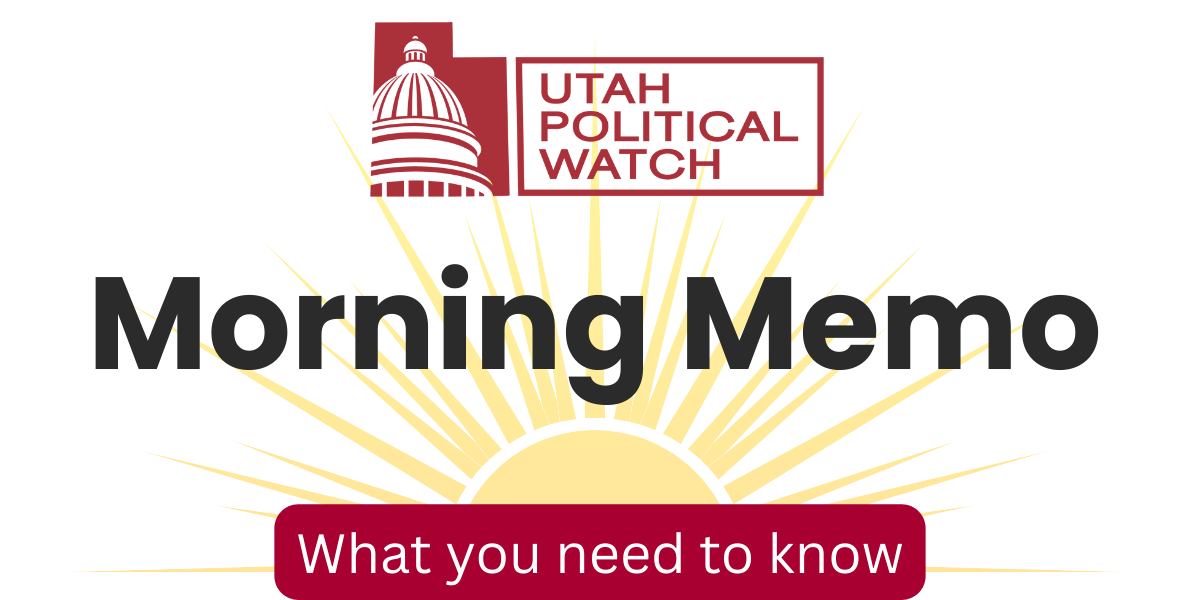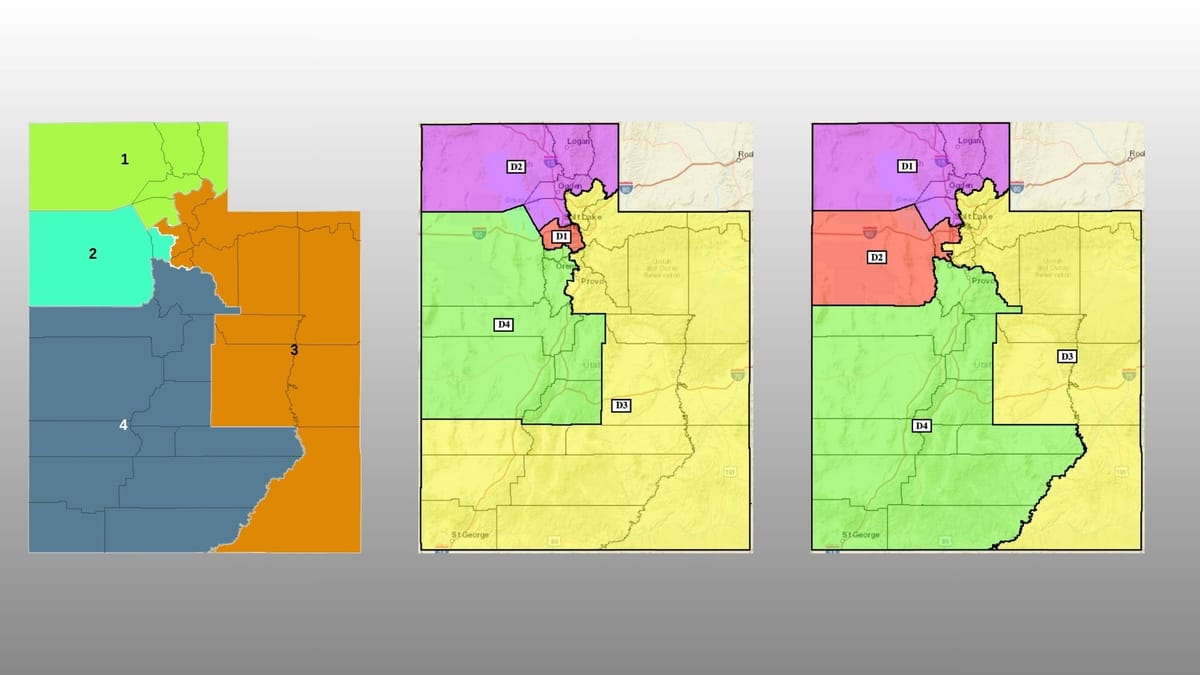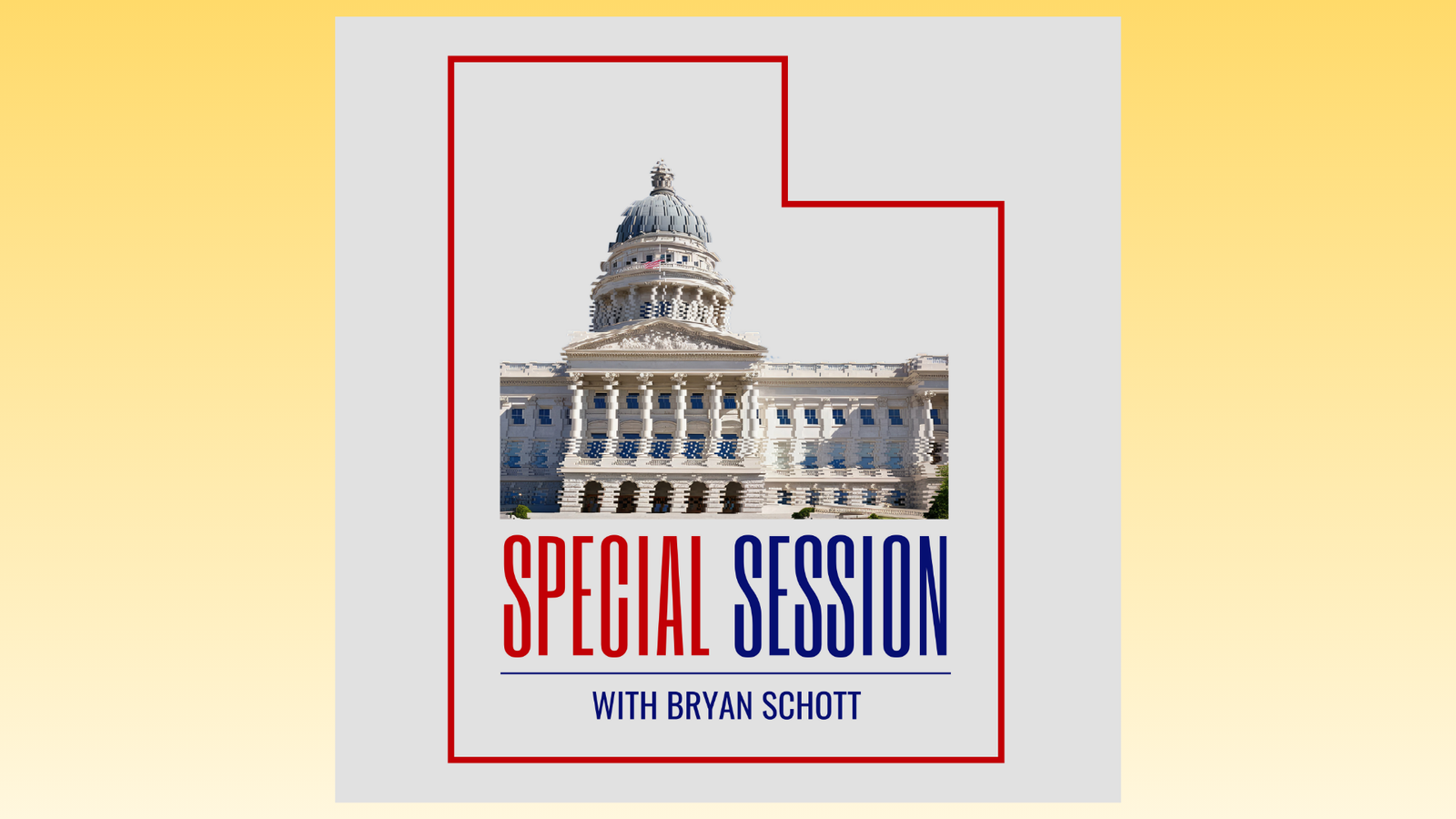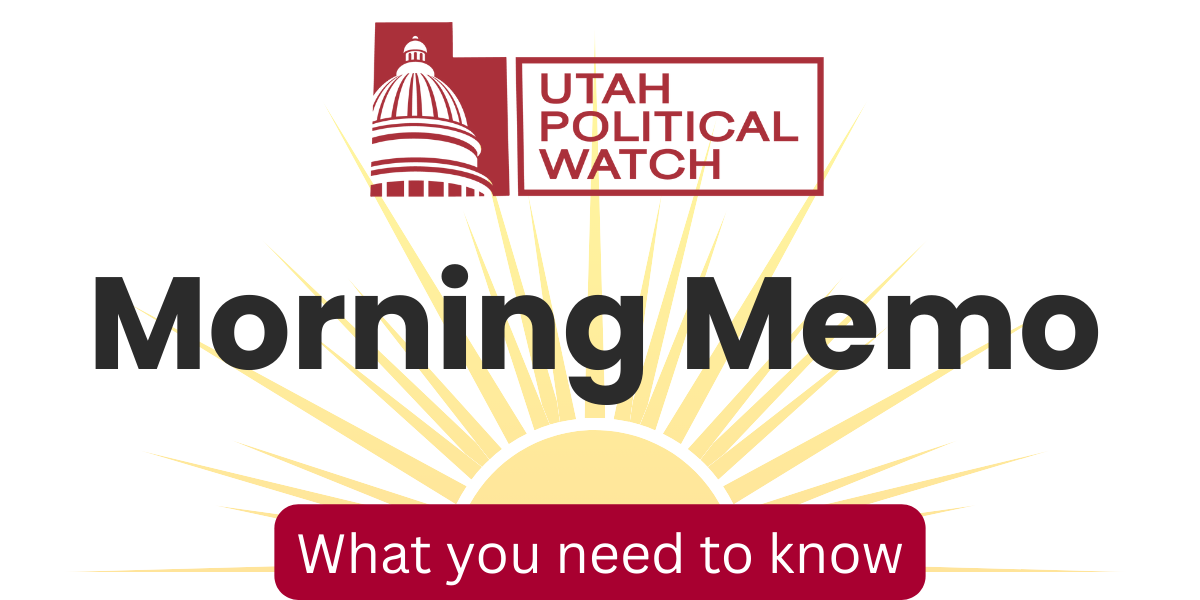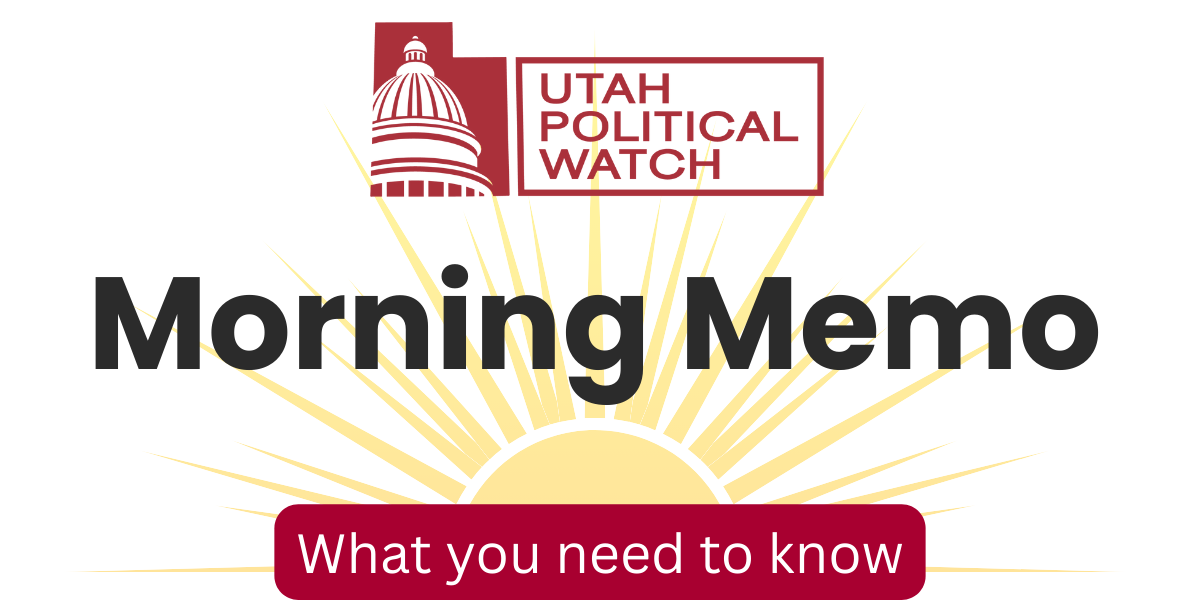⏰ Tick Tock
The deadline for the Utah Legislature to approve a final congressional map proposal and submit it to the court is today.
Days until Election Day (11/4/2025) - 29
Days to the start of the 2026 Utah Legislature (1/20/2026) - 106
Days until the 2026 midterm elections (11/3/2026) - 393
Days until the 2028 presidential election (11/7/2028) - 1,128
Livestream tonight!

Join us tonight at 6:30 pm to talk about what happened in today's redistricting/special session.
Here's where you can watch and participate:
Today's edition has been unlocked for non-subscribers.
Please consider becoming a paid subscriber or making a one-time donation to support this work.
Brammer's triple play: Three tests, one GOP victory
In a last-minute maneuver, Sen. Brady Brammer dropped some major changes to his bill on Friday afternoon, adding two new tests courts must use to determine if congressional maps are "fair"—a term that takes on a new meaning under his proposal.
The changes are poised to sail through today's special legislative session without any meaningful public discussion, despite their far-reaching implications.
At its core, SB1011 enshrines a "partisan symmetry" formula that effectively cements Republican control by forcing all four districts to reflect Utah's deep-red voting patterns.
Brammer's bill adds two more tests that claim to prevent gerrymandering but would actually strengthen Republican control.
The first new test, called "ensemble analysis," requires generating 4,000 computer-simulated maps following Prop. 4 guidelines on population equality and community preservation. Any proposed map deviating from this computer-generated majority gets labeled as gerrymandered.
In a state that votes overwhelmingly Republican, this test effectively kills any chance of creating a Democratic-leaning district.
Brammer's second test, the "mean-median difference," appears equally neutral but carries similar partisan implications. It measures how far a party's district-level performance strays from its statewide average. Maps showing more than 2% deviation get axed - a requirement that essentially mandates each district mirror Utah's Republican-dominated statewide results.
The foundation for all three tests rests on Brammer's "partisan index"—a calculation that averages results from the three most recent statewide races for president, governor, and other top offices.
Conveniently, Brammer inserted a provision that counts Phil Lyman's 13.57% write-in votes from the 2024 governor's race as Republican votes. This inflates the GOP average by more than 4.5% and makes a significant impact on any calculation of "fairness."
While the original bill got a perfunctory hearing in the Redistricting Committee last month, the major revisions will see their first public airing today on the Senate floor just minutes before the vote. The breakneck schedule of today's special session ensures these significant changes to Utah's election law dodge meaningful scrutiny in either chamber.
Perhaps most brazenly, Brammer's bill tilts the judicial scales in favor of the legislature. Courts must now use only these three Republican-friendly tests to evaluate district maps. Pass these tests, and a map proposal becomes immune to gerrymandering challenges.
The timing isn't coincidental. Lawmakers will vote today on a replacement for the congressional map that Judge Dianna Gibson struck down in August. If Brammer's bill passes both houses with a two-thirds majority, an almost certainty, it will take effect when Gov. Spencer Cox signs it, forcing Gibson to evaluate the new map using these carefully crafted parameters that favor Republican control.

